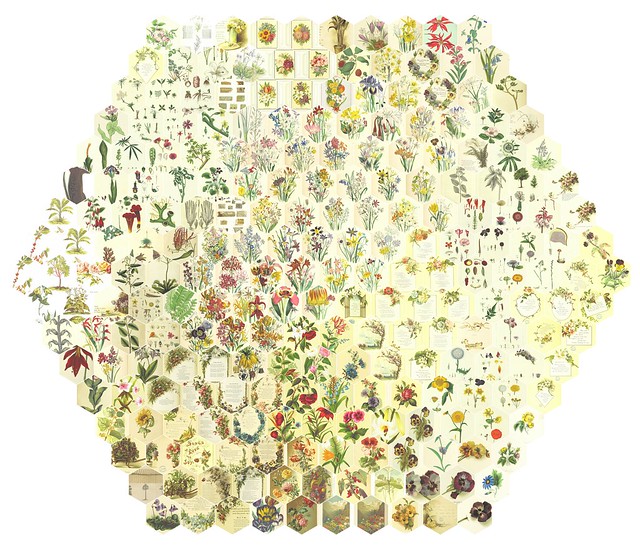There’s been a lot of talk about cooking this week, so as I regularly feel like I’m on the Masterchef mystery box challenge when I form my DITA blog, I couldn’t resist a little amusement by tackling another all new technology in a culinary kind of way.
Therefore, in keeping with the foodie theme, my main technological ingredient this week is a wonderful thing called an Application Programming Interface (API). To go with that I’m going to prepare a bed of Web 2.0 technology with a nice helping of Flickr flavoured API (as I think images are just delicious and go with everything) and then I’m going to finish it all off with a little British Library seasoning. I haven’t got a clue what I’ll rustle up for an embedded dessert, but I’m sure something will evolve along the way.
So for starters….
Just like a good cheese, the world wide web has been developing with age. Over the last 20 years it has moved from a static, mild character to a dynamic, powerful, connected experience. Coined Web 2.0, it has evolved to include an array of interactive websites such as Twitter, Facebook, Flickr, Wikis, Google Maps and YouTube with a focus on accessibility, sharing content and creating, where everybody can taste and feedback.
…and so to main course…
Lets take our chosen platform today which is Flickr, a website that is full of metadata from its 5 billion images and which possesses the aforementioned clever communication service – an application programming interface. The Flickr API allows web developers to request, retrieve and return various types of data using its set callable methods within the restrictions of Flickr’s agreed terms and conditions. It operates using a representational state transfer (REST) framework, receiving communication in URLs and responding in XML – according to many sources, an overall easier format to make calls and afterward parse to HTML.
According to Library Mash-ups (Engard, 2009) the free Flickr API is ‘a developers dream’ because of its extensive documentation, test areas, developer discussion groups and blog. As public API’s are generally for noncommercial use, Engard also reinforces the importance of observing and revisiting licensing conditions and terms of service as platforms such as Flickr are entitled to change these at any time.
With its API, Web 2.0 features and the introduction of the Flickr Commons project aiming to increase access and knowledge to public photography archives, Flickr has become more than a social photo sharing site. Over 100 contributing cultural sector institutes recognise the importance of Flickr Commons in digital scholarship, crowd sourcing and it’s potential to re-purpose public domain content in multiple contexts, when compared to other independent library managed software.
Last week I mentioned the British Library’s Flickr Commons contribution of 1 million images, with the British Library Labs team appealing for ‘new, inventive ways to navigate, find and display these ‘unseen illustrations,’ and in particular, an invitation to create a crowd-sourcing application to aid image metadata.
After its first day on Friday 13th of December 2013, the photo-stream received an incredible 5 million hits and now, in less than a year, it’s reached 200 million views! Many artists and researchers have responded in various API mashups and reinventions as seen on the creative projects list here on the British Library’s Wiki set up by the BL Labs for curating public domain content. Highlights include an alternative scrapbook style viewer named Culture Collage and the algorithmic alchemy of Mario Klingemann (aka Quasimondo) – but more about him in blogs to come.
Further related content remixing opportunities have happened within the British Library Sound and Vision department as seen here.
…and dessert?
Well, time for a little colourful embedding – I found some lovely things this week based on searching for artistically reinvented maps (the embed is a teaser so follow the previous hyperlink)
and a little from the talented Mr Mario Klingemann (courtesy of Flickr)…
‘251 Random Flowers Arranged by Similarity‘
..and a very friendly API explanation that helped me a lot and appealed to my teacher soul. (courtesy of BBY Open)
until next week …don’t worry, be API


This is a great post! Your explanation really helped me to understand the whole API story. Thank you!
LikeLike
Another great post Wendy! I really like the analogy in the video that you shared, and the analogy in your blog post. It definitely helped me understand APIs a little bit more.
LikeLike
Oh I really enjoyed this post!! I love the culinary theme and I feel like I understand how to describe APIs a lot better
LikeLike
Thank you for these comments – no better compliment for a former educator 🙂 – so glad it helped !
LikeLike